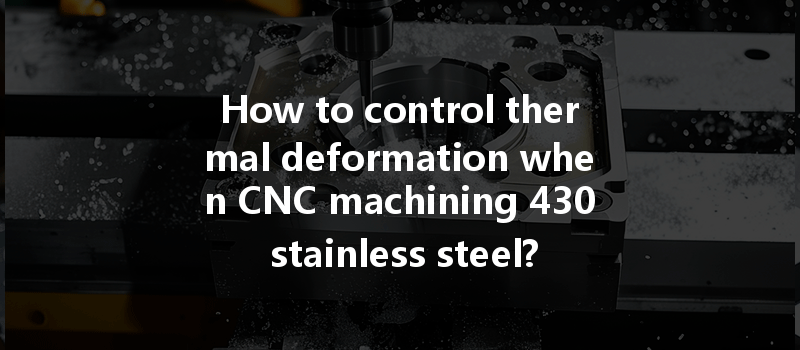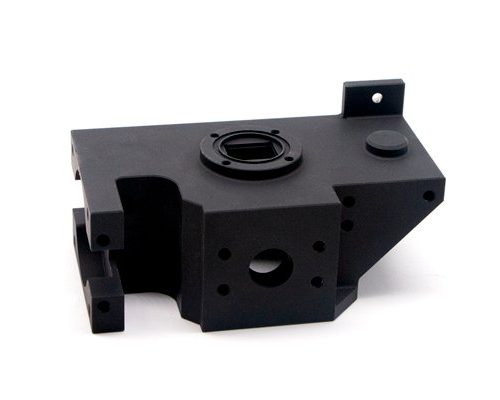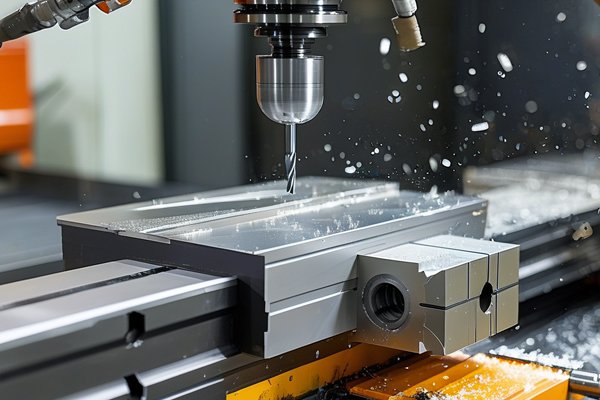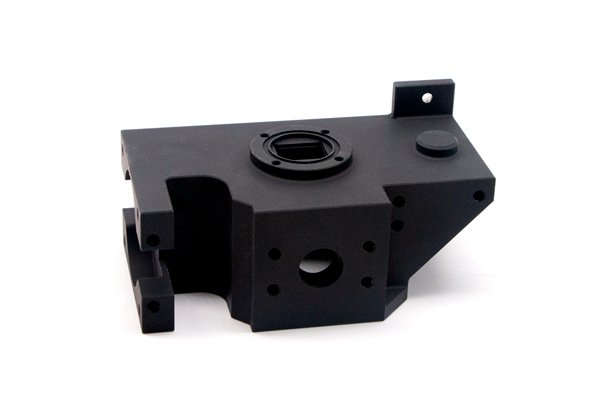In the world of CNC machining, precision is paramount, and maintaining geometric accuracy is one of the crucial aspects to ensure a successful manufacturing process. One of the challenges faced during CNC machining, particularly with materials like 430 stainless steel, is thermal deformation. As temperature variations occur during machining, they can lead to unwanted distortions and inaccuracies in non-compliant parts, adversely affecting quality, performance, and functionality.
At YL Machining, we understand the intricate dynamics between machining processes, material properties, and thermal effects. This comprehensive blog post aims to delve deep into the concept of thermal deformation, the specific challenges associated with machining 430 stainless steel, and effective strategies to control thermal deformation.
In this discussion, we will cover the nature of thermal deformation, factors influencing it, techniques to mitigate its effects, and measured practices that can be employed to enhance machining outcomes. This extensive guide will serve CNC machinists, engineers, and manufacturers seeking to optimize their machining operations for improved performance and reduced waste.
Understanding Thermal Deformation
Nature of Thermal Deformation
Thermal deformation, often termed as thermal expansion or thermal distortion, refers to the change in dimensions of a material as it is subjected to thermal stress due to temperature variations. During CNC machining, heat is generated primarily from the cutting tool as it interacts with the workpiece. The energy transfer can lead to temperature spikes, which subsequently cause the material to expand or contract. This phenomenon is especially critical in metals due to their thermal conductivity and expansion coefficients.
Impact on Geometric Accuracy
When machining 430 stainless steel, thermal deformation can lead to dimensional inaccuracies and shape changes that affect feature tolerance. Even minor distortions can result in parts that do not meet specifications, leading to additional rework, delays, and increased manufacturing costs. For instance, a study conducted by the Journal of Manufacturing Science and Engineering demonstrated that temperature increases of just a few degrees Celsius can induce measurable deviations in machined component geometry.
The Metallurgical Framework of 430 Stainless Steel
430 stainless steel is a ferritic stainless steel known for its good corrosion resistance, formability, and heat resistance. Its relatively low thermal conductivity compared to austenitic stainless steels makes it prone to thermal effects during machining. The thermal expansion coefficient for 430 stainless steel is around 16.5 x 10^-6 /°C, which implies that a temperature change of 100°C could result in a dimensional change of approximately 1.65 mm per meter length.
Factors Influencing Thermal Deformation During CNC Machining
Understanding the factors influencing thermal deformation is critical to successfully mitigating its effects. Here are the primary elements to consider:
Tool Geometry and Selection
The geometry of cutting tools plays an influencing role in heat generation. Tools with larger cutting edges or those with increased friction will generate more heat, which can subsequently affect the workpiece temperature. Selecting appropriate tools with optimized geometry helps to minimize friction and heat generation.
Cutting Speed and Feed Rate
High cutting speeds can simultaneously increase machining efficiency while leading to higher heat production. Conversely, slower speeds generate less heat but can affect productivity. Finding the right balance in cutting speed and feed rate is essential for controlling thermal deformation.
Depth of Cut
Larger depths of cut increase the volume of material being removed in one pass, which can heighten the heat generated. Additionally, the material removal rate can make a significant difference in thermal effects, necessitating careful consideration of the optimal depth of cut.
Coolant Application
The application of coolant during CNC machining is crucial. Inadequate or improper coolant application can lead to excessive thermal buildup. Using appropriate coolants can dissipate heat effectively, thus controlling overall temperature and resulting deformation.
Workpiece Material Properties
Material properties such as thermal conductivity, expansion coefficient, and specific heat capacity all play roles in determining how a material reacts to heating during the cutting process. Understanding these properties can guide optimizations in machining parameters.
Techniques to Control Thermal Deformation
Now that we’ve discussed the factors involved, let’s explore effective strategies and techniques used to control thermal deformation in CNC machining 430 stainless steel.
Effective tool path strategies and cutting parameters can significantly reduce the thermal load on the material. Implementing adaptive tool paths that minimize abrupt changes in direction can also help maintain consistent temperature distribution across the workpiece.

Utilizing cutting tools with ceramic or coated surfaces can improve heat dissipation due to lower friction coefficients. Tools made from materials with high-temperature resistance maintain sharpness longer, thereby reducing friction and heat generation.
Implementing advanced cooling techniques such as through-tool cooling or mist systems can improve coolant application. Coolants can also be formulated to have specific thermal properties, enhancing overall heat removal efficiency.
Maintaining a controlled machining environment can help in reducing temperature fluctuations. Monitoring and controlling ambient temperature can play a significant role in minimizing the risk of thermal deformation.
Employing thermal management technologies, such as heat sinks or cooling plates, can aid in dissipating accumulated heat during extended machining runs. These systems help in maintaining the temperature of the workpiece within specified limits.
Utilizing computational modeling to simulate machining operations and predict temperature distributions can assist engineers in making informed decisions regarding cutting parameters and tool selection. Virtual simulations can forecast thermal behavior under various scenarios, allowing for proactive measures.
Ensuring tools are maintained and calibrated regularly prevents unnecessary heat generation caused by worn-out cutting edges. Dull tools increase friction during machining, generating more heat.
Incorporating sensors to monitor temperature fluctuations in real time allows adjustments to be made on-the-fly. For example, when a temperature threshold is detected, the system can prompt lowering the feed rate or applying additional coolant.
Measuring Success: Data and Insights
To ascertain that the strategies implemented for controlling thermal deformation are effective, quantifiable data collection and analysis must be conducted. Here are some recommended metrics:
Dimensional Accuracy Assessment
Using precision measurement systems such as coordinate measuring machines (CMM) will allow engineers to verify part dimensions with high accuracy, helping to assess the impact of thermal control strategies on overall machining performance.
Monitoring Tool Wear
Keeping track of tool life through monitoring systems helps in determining the relationship between thermal management strategies and tool wear rates, revealing the effectiveness of various techniques.
Thermal Imaging Analysis
Utilizing thermal imaging cameras during machining can reveal hotspots or areas of excessive heat during machining. This visual data allows for targeted interventions when needed.
Performance Metrics
KPIs such as production throughput, scrap rates, and rework costs should be tracked pre-and post-implementation of thermal deformation control techniques to evaluate their effectiveness.
In CNC machining, especially when working with materials like 430 stainless steel, controlling thermal deformation is critical to maintaining precision and product integrity. At YL Machining, we are committed to employing best practices for thermal management and optimizing our machining processes to meet the highest standards of quality. By understanding the underlying principles of thermal deformation, recognizing its influencing factors, and implementing effective control methods, manufacturers can ensure that their processes remain efficient, cost-effective, and capable of delivering superior results.
As the industry continues to evolve, embracing new technologies and methodologies will be key to staying ahead in the competitive CNC machining landscape. We hope this comprehensive guide empowers machinists and engineers to mitigate thermal deformation effectively, paving the way for innovation and excellence in CNC machining.
By applying the learned principles outlined in this article, manufacturers can make informed decisions that contribute not only to superior part quality but also to operational efficiency and business success. For tailored solutions and expert machining services, contact YL Machining today and discover the difference our expertise can make for your machining projects.
—



